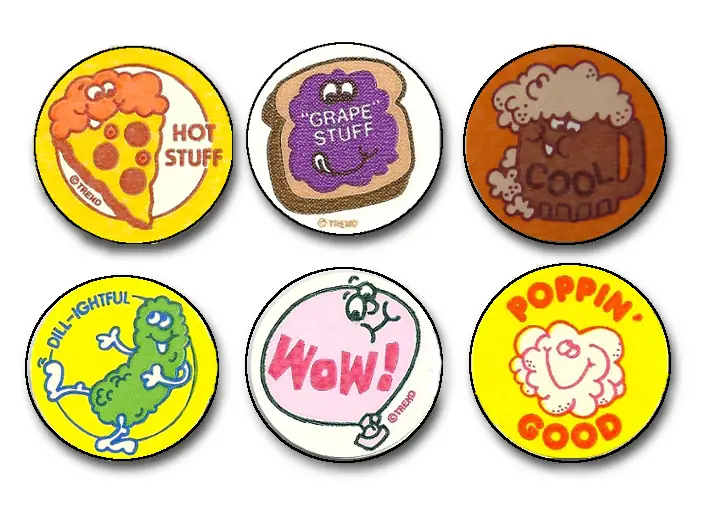
Popcorn, root beer, strawberry, and pizza — those are just some of the familiar smells we remember from scratch and sniff stickers as kids. But there is an interesting technology behind scratch and sniff stickers that make it all possible, and it has even been used to entice adults into buying products based on their smell.
The smell from a scratch and sniff happens, of course, when the sticker is rubbed. How does the scent happen, and why can it sit in a box for ten years and still give off a scent when it’s scratched? The technology wasn’t initially invented for stickers that could have a scent. It started when scientists were looking for a way to have carbonless paper.
To make a copy of a document wasn’t as easy as sticking it in a copy machine. The machines weren’t around. A piece of carbon paper had to be inserted between other pieces of paper, which was a messy process. A scientist at 3M in the 1960s came up with and patented a process of micro-encapsulation that allowed copies to be made without carbon paper. 3M found that they could use the patented process for something else — to hold a smell from scented ink. Scratch ‘N Sniff was born in 1965.
The micro-encapsulation process for scratch and sniff stickers begins when scented oil is mixed with a polymer in a reactor. It’s blended by a rotary blade at high speed until the oil beads into tiny droplets that can’t be seen by the naked eye. A catalyst is added, and the polymer forms a shell around the beads of oil.
This is where the process is stopped. The capsules are then washed and added to a water base with an adhesive. From there, the printing process can take place as the minuscule capsules are printed on paper. Of course, the process is much more complicated than this, but you get the idea.
Now to get the wonderful smell of all those oils. A simple process takes place when a sticker is scratched. When friction from scratching the sticker happens, the micro-capsules are broke open, and the smell is released. The reason a scratch and sniff sticker can still let off a smell years from when it was first scratched is because the capsules are at the micron level, smaller than a human hair. A few of those capsules continue to hold their scent for years and years since some of them are still stuck to the paper.
The perfume and cologne strips in magazines are from the same technology, except when the tab is lifted from inside the magazine, the capsules are then broke open. The process for making the scent strips is similar to the process for making scratch and sniff stickers. But perfumes and colognes, and scratch and sniff scent stickers, aren’t the only places that have used the technology. It has been used in advertisements for rubber, flowers, detergents, new cars, and food. If something has a scent, it can be printed on a piece of paper.
What was your favorite scent or memory from scratch and sniff stickers? Nothing seemed to be better than seeing a pizza sticker stuck to a piece of paper as a reward for a job well done.

